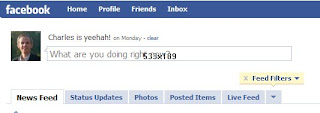
Here are a few things I have noticed to keep me going on Twitter:
1. Media influence. In May this year, Twitter attracted attention as the first site to break the story of the earthquake in China. More recently the BBC used Tweets to get the latest on the Mumbai terrorists. In Twitterworld everything happens in the present moment, with tweeters using SMS and handhelds as well as PC's to post, so a big Twitter network can potentially get a response to a disaster faster than any other medium.
2. Fundraising to date. Anyone who follows Beth Kanter will have read her stories of successful fundraising campaigns kickstarted by Twitter - I liked the one about the person who realised if every one of the 12000 people in her network gave $2 she could raise $25000, or how Beth herself raised $2,500 in 90 minutes for Cambodian children by sending out a Tweet from the Gnomedex conference.
3. Etiquette. It took years for email etiquette to develop, but the web is full of advice of the do's and don'ts of Tweeting - like everything else in this world, reaching maturity seems to be happening very quickly. Here's a couple of examples for people at home and at work.
4. Its addictive. Rumours of Twitter fatigue are not hard to find, but there seemed to be a rash of them at the start of this year. Anyone who has marvelled at the hours their children spend instant massaging on MSN should appreciate how addictive this can be. Twitter is MSN for grown ups - most Twitterers are in their 30s and 40s.
5. New ideas keep on coming. This is perhaps the biggest factor of all. I track a number of tags with social networking themes, and in the past month, the most common thread in the blog posts and other sites I have read has been new ways to use Twitter. For example this one from 22/12 on leveraging your Twitter network, an update on the $2 per Tweet story, or finally this report which shows the latest 'State of the Twittersphere' - if you have any remaining doubts that you should be investigating Twitter, look at the shape of the graph below. In the meantime, I'll keep Tweeting, and look forward to some innovative uses of Twitter by UK charities in the New Year.












